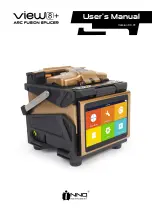
8
Rear Panel
No.
Parts/Ports
Description
1
Audio output of CH1
To enable a signal output to channel 1.This can be connected
to an external power amplifier or third-party devices.
2
Audio output of CH2
To enable the signal output to channel 2. This can be
connected to an external power amplifier or third-party devices.
3
REC output
To output the audio signal from a microphone. This can be
connected to an external recording device.
4
AUX1/AUX2
To be connected with an optional external audio source, such
as CD/DVD player, tuner, etc.
5
MIC/LINE input
It is a balanced input and can be connected with an external
microphone or other audio devices. The input sensitivity can be
set via the DIP switch.
6
MIC/LINE DIP switch
To set the sensitivity and the phantom power output of the
MIC/LINE input.
7
Power amplifier
interface
To connect to the external power amplifiers of two audio
channels, the MCU will transmit the audio signal and self-test
signal to the power amplifier(s) and receive the fault status from
power amplifier(s).
8
Spare power amplifier
interface
To connect to a spare power amplifier, the MCU will transmit
the audio signal and self-test signal to power amplifier and
receive the fault status from power amplifier.
9
Call station interface
To connect to the remote call station, transmit audio signals,
control data, and enable the power supply from the MCU to
remote call stations.
10
Power switch
To turn on or turn off the AC power.
11
Main power & fuse
To connect to the AC power supply. A fuse must be installed in
the socket for over current protection.
12
Dry contact outputs
8 dry contact output interfaces, which can be used to control
external devices.
13
Contact inputs
10 contact input interfaces, which can be connected to the third-
party devices for the business or voice alarm purpose.
















































